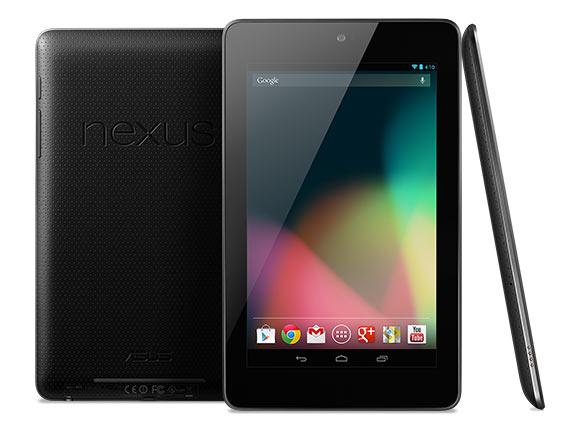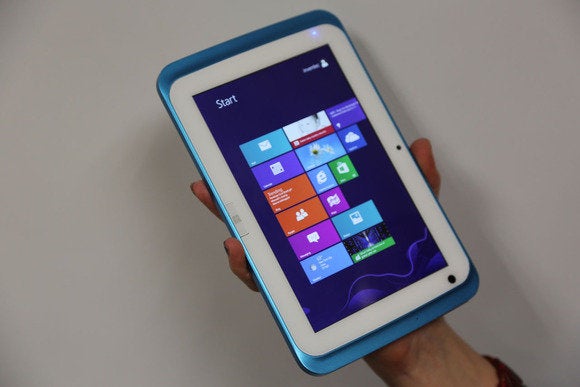I was born in 1949, Doc. I lived through the 1950s, 60s, and 70s TVs and I strongly disagree with you on the styles of TVs. I just took the first four rows of 12" TVs for a sample. . . there are literally hundreds to choose from. I also recall the proliferation of styles and differentiations you could get. The knobs could be anywhere. Right side of the screen most often where you described because most people are right handed, but many other options as that selection showed. You also fail to recognize that by the 1970s, most of the early TV patents, especially Design Patents when do not extend as long as Utility Patents have long since expired and everything you describe is now in the public domain.
The iPad, which came out only seven years ago, did have real ingenuity. . . or someone would have come up with it before Apple did and captured the market they did. Here are some of the attempts to break into the tablet market before iPad succeeded:

The Intel Web Tablet from 2001, it could connect to the wirelessly Internet
by a dongle that would plug into your PC. . . around your house.
Then there was Microsoft's effort:

The 2002 Microsoft Tablet PC, which had a 600MHz processor, ran a touch screen version of XP,
using 128Megs of RAM and a 10G hard drive, a stylus, and a pretty good handwriting recognition algorithm.
It also sported bluetooth and wireless networking.
Bill Gates reportedly said in 2002 that"within five years I predict it will be the most popular form of PC sold in America."
Uh, nope, Bill, it wasn't. It was way too heavy and short of battery life and did not have many tablet optimized applications. . .
Five years later, in 2006, Microsoft, working with ASUS, tried again with this:

This Asus R2H ran Windows XP Tablet PC Edition, and had a passive rather than an active touchscreen.
UMPCs struggled to find a market — these "tablets" were too expensive for the consumer,
they were rapidly overtaken by more versatile and less expensive netbooks.
Again, I refer you to THE LAW. You generalities are not what we are talking about in the Nokia model. There are plenty of small tablets that DO NOT copy the iPad Mini and would not be deemed to do so. . . in fact, Dr. Sivana, there are literally dozens of models out there now that did not feel compelled to "clone" the iPad Mini to break into the market.
Daimler-Benz did not sue Ford because Ford stole the idea of putting four wheels on the car. And if Apple chooses not to put their logo on the front, they can’t insist that other companies MUST have one.
By the time that Ford started making automobiles, the 17 year patent on that had expired so there was nothing to steal. It had fallen into the public domain.
Your comment on Apple putting their logo on the front of their product shows you have no understanding at ALL of design patents or you would know that has NOTHING to do with it. . . and in fact logo position or company name are excluded from design patents as those lie in the realm of TradeMarks, but the lack of adornment CAN be included which Apple has specifically included. Read again what the law says about Trade Dress. . . and look again at the Nokia tablet and ask yourself "would an average consumer looking from a reasonable distance mistake the Nokia for an Apple?" The answer can only be yes. That question was asked in the Apple v. Samsung trial of the Samsung defense attorney and he could NOT distinguish his client's product from Apple's from a mere six feet away. . . and in fact selected the Apple product as his client's product! In that trial, Samsung was ordered to pay almost $1 billion in damages on DESIGN PATENTS. It was Samsung's advertising (propaganda) department that coined the false claims and phrases about "you can't patent a rectangle with rounded corners" in an effort to bend public sympathy their way, when that is exactly what a Design Patent allows you to do in the description portion of the product's design. . . and many other products include that very set of words in their Design Patent's descriptions of their designs.
Nokia's design in no way has to look exactly like Apple's, yet it does. Here, for example is a very nice design Nexus 7 made for Google by ASUS that looks nothing like an Apple product except in general form factor. No one would mistake it for an Apple iPad.

Here's an 8" tablet Inventec which runs Windows that looks nothing at all like an iPad, yet fulfills all the expected functions you describe without infringing Apple's Design Patents:

And a 9" tablet from Trooper Android tablet that also does not look like an Apple product, yet still fulfills the tablet requirements without infringing the Design Patents.

So, Dr. Sivana, it certainly could have been done by a company with the reputation of Nokia Oyj. Why could they not be creative in their design?